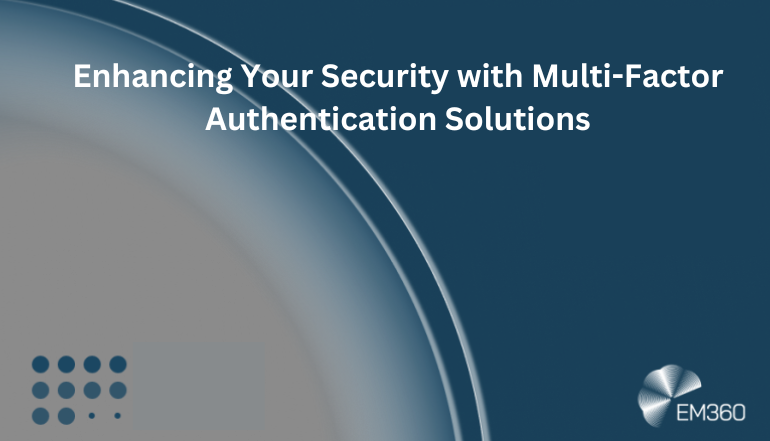
Introduction:
As cyber threats continue to evolve and become more sophisticated, it has become increasingly important for organizations to implement robust security measures to protect their sensitive data and systems. One such measure is multi-factor authentication (MFA), which provides an extra layer of security by requiring users to provide multi factor authentication solution before accessing a system or application. In this article, we will explore the benefits of MFA solutions, how they work, and some frequently asked questions about their implementation and use.
Benefits of Multi-Factor Authentication Solutions:
Stronger Security:
MFA solutions provide an additional layer of security beyond traditional username and password authentication. This makes it more difficult for attackers to gain unauthorized access to a system or application, as they would need to have access to multiple forms of authentication, such as a password and a biometric factor.
Reduced Risk of Data Breaches:
MFA solutions can help reduce the risk of data breaches by making it more difficult for attackers to access sensitive data. Even if an attacker manages to obtain a user's password, they would still need to provide additional authentication factors before gaining access to the system or application.
Compliance:
MFA solutions can help organizations comply with regulatory requirements, such as the Payment Card Industry Data Security Standard (PCI DSS), which requires multi-factor authentication for remote access to cardholder data.
User Convenience:
MFA solutions can be configured to provide a seamless user experience, requiring minimal effort from users to authenticate. For example, biometric factors such as fingerprints or facial recognition can be used to quickly and easily authenticate users.
How Multi-Factor Authentication Solutions Work:
MFA solutions typically require users to provide two or more forms of authentication before granting access to a system or application. These factors can include:
Something the user knows, such as a password or PIN.
Something the user has, such as a mobile phone or security token.
Something the user is, such as a biometric factor like a fingerprint or facial recognition.
When a user attempts to access a system or application, they will be prompted to provide their username and password, as well as one or more additional authentication factors. This can include a verification code sent to their mobile phone, a security token that generates a one-time password, or a biometric factor like a fingerprint.
Frequently Asked Questions:
How easy is it to implement MFA solutions?
Implementing MFA solutions can be relatively easy, depending on the complexity of the organization's IT infrastructure. Many MFA solutions are cloud-based and can be easily integrated with existing systems and applications.
What are some common challenges when implementing MFA solutions?
One common challenge when implementing MFA solutions is user resistance. Users may be resistant to the additional step required to provide multiple authentication factors. Additionally, some legacy systems and applications may not be compatible with MFA solutions, requiring additional work to implement.
How do MFA solutions impact user productivity?
MFA solutions can have a minor impact on user productivity, as it adds an additional step to the authentication process. However, many MFA solutions are designed to be seamless and require minimal effort from users to authenticate.
Are MFA solutions necessary for all organizations?
MFA solutions are not necessary for all organizations, but they are recommended for those that handle sensitive data or are subject to regulatory requirements that mandate MFA for remote access.
Conclusion:
Multi-factor authentication solutions provide an additional layer of security for organizations looking to protect their sensitive data and systems. MFA solutions offer stronger security, reduced risk of data breaches, compliance with regulatory requirements, and user convenience. They work by requiring users to provide two or more forms of authentication before granting access to a system or application. While implementing MFA solutions can have its challenges, they are a valuable investment.

No comments yet